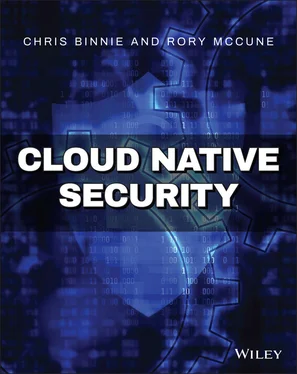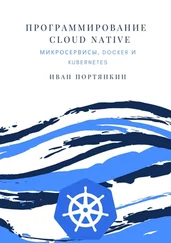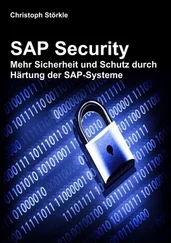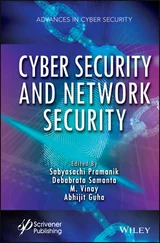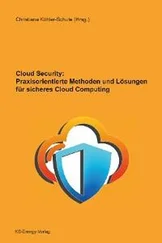$ lsmod | grep falco falco 634880 0
As we can see, falcois present in the list of loaded modules, so we can continue to proceed. Obviously, if you installed packages directly onto the host as the rootuser, this step would not be needed, but it is important to illustrate that container protection security tools also have trade-offs, and suffice to say functionality like rootless mode will not accommodate such functionality without some heartache. Relinquishing an undefined security control, such as having a common attack vector across all hosts, to onboard a security tool to protect running containers is a necessary evil; in this case, the kernel module is essential to Falco's functionality. Be aware that you are allowing the tool to tap into the very lowest level of a host's innards (and its running containers), so you need to be completely sure that the security product to which you are offering privileged access is fully trustworthy. On a large, containerized estate, with orchestrators and potentially tens of thousands of running containers on differing varieties of hosts, the fact that you are adding another attack vector to each and every host in the estate needs to be carefully considered. You are effectively opening up a predictable security hole (that is, it is predictable if an attacker knows that a privileged container runs on each host) that can be exploited throughout the estate if a vulnerability is found.
Next, to run our Falco container, we will run the following long command all on one line ideally to enable the kernel capability CAP_SYS_PTRACE. According to the SYS_PTRACEman page ( man7.org/linux/man-pages/man2/ptrace.2.html), we can control and manipulate other processes with this privilege as well as move data into the memory space of processes.
$ docker run --rm -it --security-opt apparmor:unconfined \ --cap-add SYS_PTRACE \ --pid=host $(ls /dev/falco* | xargs -I {} echo --device {}) -v
/var/run/docker.sock:/var/run/docker.sock \ falcosecurity/falco-no-driver:latest
Note that we're demonstrating Falco on a Linux Mint machine (which is based on Ubuntu 18.04), and this command uses AppArmor effectively to stop rogue processes accessing several locked-away parts of a system. To use it, we also need to add the following switch to provide the required permissions to our container:
--security-opt apparmor:unconfined
As demonstrated in Chapter 1, you might also recognize that the container is offered the ability to access the host's process table namespace with the --pidswitch on the Docker command.
Think about this for a moment. From a security vendor's perspective, AppArmor has clearly made an effort to reduce the attack surface its product brings to each host. However, from an organization's point of view, there's definitely a significant trade-off. We are effectively switching off all the protection afforded by AppArmor for this container and offering the tool the ability to poison or break other processes. That applies not just to our container runtime but our host(s) as a whole. Do not be mistaken; Falco is certainly not alone when it comes to this elevated permissions requirement for runtime protection.
After we have run the previous command, its brief output includes information as follows:
2020-08-09T12:27:54+0000: Falco initialized with configuration file /etc/falco/falco.yaml 2020-08-09T12:27:54+0000: Loading rules from file /etc/falco/falco_rules.yaml: 2020-08-09T12:27:54+0000: Loading rules from file /etc/falco/falco_rules.local.yaml: 2020-08-09T12:27:54+0000: Loading rules from file /etc/falco/k8s_audit_rules.yaml:
Thanks to the fact that we entered the command as shown earlier, without adding -dto daemonize the container and detachthe terminal from it, the STDOUToutput (direct to the terminal) immediately starts listing some useful insights into what's happening on the host machine. Let's see what we can expect from Falco by looking at some of the output now. The first example is related to filesystem access:
2020-08-09T13:35:47.930163243+0000: Warning Sensitive file opened for reading by non-trusted program (user= program=pkexec command=pkexec /usr/lib/x86_64-linux-gnu/cinnamon-settings-daemon/csd-backlight-helper --set-brightness 828 -b firmware -b platform -b raw file=/etc/pam.d/common-account parent=csd-power gparent=cinnamon-sessio ggparent=lightdm gggparent=lightdm container_id=host image=)
We can see that “Sensitive file opened for reading by non-trusted program” has flagged an issue. Let's try to spawn a container from an image:
2020-08-09T13:45:46.935191270+0000: Notice A shell was spawned in a container with an attached terminal (user=root (id=8f31495aeedf) shell=bash parent= cmdline=bash terminal=34816 container_id=8f31495aeedf image=)
As we can see, Bash was used to access a running container. The flagged issue is listed as “A shell was spawned in a container with an attached terminal.”
Another flagged issue, this time more specific to the host, is as shown here:
2020-08-09T13:48:37.040867784+0000: Error File below / or /root opened for writing (user=root command=bash parent=sudo file=/root/.bash_history-18236.tmp program=bash container_id=host image=) 2020-08-09T13:48:37.041053025+0000: Warning Shell history had been deleted or renamed (user=root type=rename command=bash fd.name= name= path= oldpath=/root/.bash_history-18236.tmp host (id=host))
We can see that in the /rootdirectory a process has written to a temporary file while the .bash_historyfile, used to record typed Bash commands, was probably opened/closed and appended to.
Another example alert might be this container warning:
2020-08-09T15:41:28.324617000+0000: Notice Container with sensitive mount started (user=root command=container:3369c68859c6 dangly_goldwasser (id=3369c68859c6) image=falcosecurity/falco-no-driver:latest mounts=/var/run/docker.sock:/var/run/docker.sock::true:rprivate)
We can see that a volume has been mounted by none other than Falco itself so that it can mount the Docker socket to tap into Docker Engine.
Next, we will look at how Falco's rulesets are constructed. Here is a more desktop-oriented rule, which should prevent applications (other than Skype or WebEx) from accessing the local camera:
- rule: access_camera desc: a process other than skype/webex tries to access the camera condition: evt.type = open and fd.name = /dev/video0 and not proc.name in (skype, webex) output: Unexpected process opening camera video device (command=%proc.cmdline) priority: WARNING
As we can see, the rule consists of a name and description followed by three criteria. They are the conditionFalco should look out for, the outputit should report, and the prioritylevel of the output.
Here is a container-specific rule to examine a bit closer:
- rule: change_thread_namespace desc: an attempt to change a program/thread\'s namespace (commonly done as a part of creating a container) by calling setns. condition: syscall.type = setns and not proc.name in (docker, sysdig, dragent) output: "Namespace change (setns) by unexpected program (user=%user.name command=%proc.cmdline container=%container.id)" priority: WARNING
This rule pays close attention to a container moving between namespaces. The setnssyscall that is marked as important is used to change namespace. The rule, however, ignores the event if docker, sysdig, or dragentinitiate it.
Another example is a case study that Sysdig wrote about to help explain how a CVE could be mitigated using Falco, at the end of 2019. It was CVE-2019-14287 ( cve.mitre.org/cgi-bin/cvename.cgi?name=CVE-2019-14287) that allowed a simple command to be run to make the sudocommand run commands as the rootuser. To exploit the CVE, it was apparently as simple as using the sudocommand as follows:
Читать дальше
